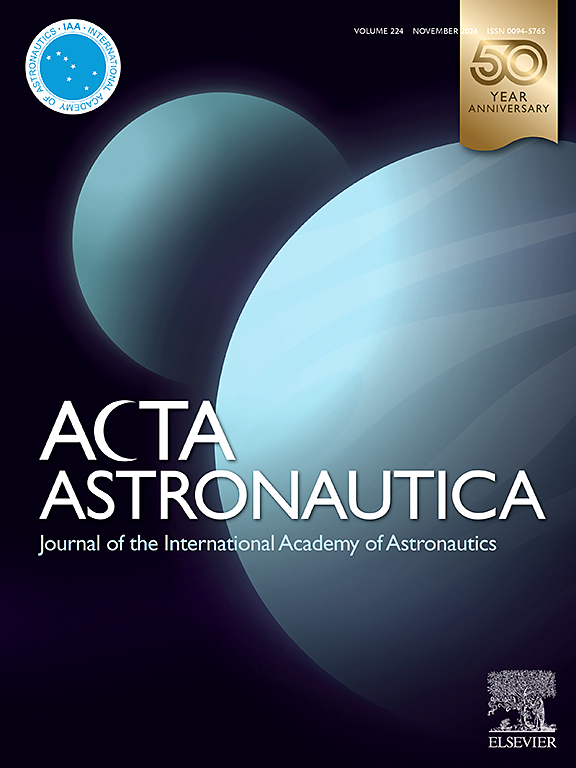Gravity effects on lower limb perfusion observed during a series of parabolic flights
IF 3.1
2区 物理与天体物理
Q1 ENGINEERING, AEROSPACE
引用次数: 0
Abstract
The present observational study simultaneously measured four key factors (arterial oxygenation, superficial tissue oxygenation, peripheral skin temperature, toe systolic pressure) to determine the impact on lower limb perfusion in altered gravity conditions. 24 healthy test subjects (16 male, 8 female) took part onboard a series of parabolic flights. When comparing lower limb perfusion values to 1G (control/Earth's gravity) the study found: 1) no significant difference between arterial oxygenation values in hyper or microgravity was detected when using a pulse oximeter; 2) a significant difference in superficial tissue oxygenation in hyper and microgravity was detected by white light spectroscopy; 3) a significant difference in skin temperature of the foot was detected by thermography in hyper and microgravity; 4) an insufficient sample could be obtained for toe systolic pressure. Reduction in superficial tissue oxygenation and peripheral skin temperature in microgravity compared to 1G, potentially suggests a reduction in blood flow. White light spectroscopy and thermography devices demonstrated they functioned as usual in altered gravity conditions potentially offering a quick, reliable method of assessing the acute effects of hyper and microgravity on lower limb perfusion. These methods may be useful to predict healing potential when injuries occur and highlight early warning signs of tissue damage due to poor perfusion. However, additional work to further establish the impact on oxygen transport in the superficial tissues in both acute and sustained microgravity would be beneficial.
求助全文
约1分钟内获得全文
求助全文
来源期刊

Acta Astronautica
工程技术-工程:宇航
CiteScore
7.20
自引率
22.90%
发文量
599
审稿时长
53 days
期刊介绍:
Acta Astronautica is sponsored by the International Academy of Astronautics. Content is based on original contributions in all fields of basic, engineering, life and social space sciences and of space technology related to:
The peaceful scientific exploration of space,
Its exploitation for human welfare and progress,
Conception, design, development and operation of space-borne and Earth-based systems,
In addition to regular issues, the journal publishes selected proceedings of the annual International Astronautical Congress (IAC), transactions of the IAA and special issues on topics of current interest, such as microgravity, space station technology, geostationary orbits, and space economics. Other subject areas include satellite technology, space transportation and communications, space energy, power and propulsion, astrodynamics, extraterrestrial intelligence and Earth observations.
 求助内容:
求助内容: 应助结果提醒方式:
应助结果提醒方式:


